Passiflora Caerulea: [Cultivation, Irrigation, Care, Pests and Diseases]
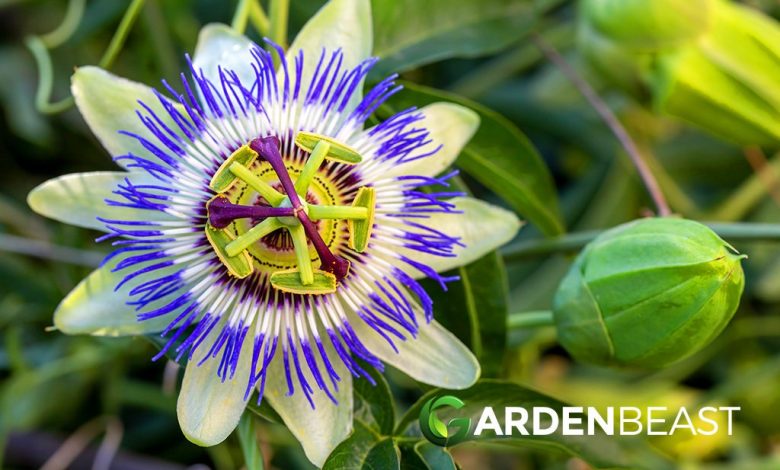
What will you learn in this article? We will talk about Passiflora Caerulea, as well as how you can grow it in your garden and about the care that this wonderful plant requires, whose beauty is within the reach of few other beautiful flowers.
Passion flowers are amazing.
Some species have edible fruits, but not particularly tasty ones; egg-shaped
Passion flowers are climbers and quickly cover a wall or fence.
There are a few varieties to choose from, including the common passionflower, Passiflora caerulea, which is hardy in most parts of the British Isles despite being native to the tropics of South America. Most passionflowers are evergreen, with dark green leaves and white or purple flowers.
Some passion flowers are only suitable for cultivation in a greenhouse.

Important points when sowing Passiflora caerulea
- Where to sow? It does not need direct sunlight. / Half shade.
- When? In summer by cutting. Early spring by seed.
- How do we prepare the land? Removed, removing weeds. With fertile substrates with sand and peat. Wet. Moderate subscribers.
- How do we water? With drip.
- How often do we water? In summer every 2 to 3 times a week. Rest of the year less intense especially in winter.
- Plagues and diseases? Mealybugs, Aphids and Mites and chewing, scraping and sucking insects.
Characteristics of Passiflora Caerulea
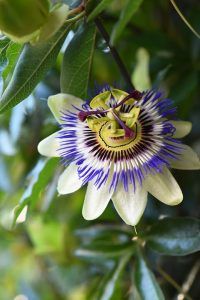 Passiflora caerulea belongs to the Passifloraceae family. It is a genus made up of about 400 species, almost all from America, although there are some native to Australia and Asia.
Passiflora caerulea belongs to the Passifloraceae family. It is a genus made up of about 400 species, almost all from America, although there are some native to Australia and Asia.
Its common name is Pasionaria, Granadita, Jugo or Pasionaria azul. Most species of passionflowers are climbers.
Passiflora caerulea has woody or herbaceous stems and perennial leaves, its very showy flowers are white, blue and purple.
The flowers of passiflora caerulea acquire a large size, up to 10 centimeters in diameter; and are surrounded by various green bracts, thus maintaining an egg shape. In tropical climates it can flower all year round. The fruit is a berry that in some species is edible.
When to plant Passiflora caerulea?
The sowing of passiflora caerulea can be done by cuttings with three leaves in summer. But if it is done with seeds, it should be grown in early spring, in sand and peat at 18-22º C.
Where to plant it?
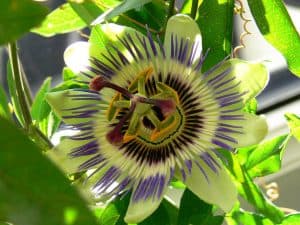 The location must have good lighting for flower production, although placing the plant in semi-shade can also be considered.
The location must have good lighting for flower production, although placing the plant in semi-shade can also be considered.
However, it is best to place the plant in semi-shade and with a little more sunlight in winter.
Passiflora caerulea is the most rustic of the plants called passionflowers, and can even live in places between -5/-10º. When they are young, it is advisable to protect them a little, in winter.
Passiflora caerulea can be grown indoors in pots in a very bright place, but in winter it should be placed in a cool place, heating is not convenient. It is a very suitable plant to cover pillars, walls and terraces.
You have to provide support so that the branches can climb.
How to prepare the land?
The passiflora caerulea prefers fertile, humid soils, moderately fertilized so as not to favor the excessive development of the leaves.
An excess fertilizer in the passiflora caerulea plant will favor the development of the leaves, but instead, it will give few flowers. The soil must be kept moist. Spray the plant in summer to give it the degree of humidity it needs.
During the spring and summer it is convenient to pay every 15 days with a liquid fertilizer mixed with the irrigation water. During the first 2 months following the establishment of the plantation, special care must be taken to eliminate weeds, until the plantation is «closed».
How do we water Passiflora caerulea?
 The nutritional water requirements of passiflora caerulea type plants are frequent and abundant watering during the growth and flowering seasons.
The nutritional water requirements of passiflora caerulea type plants are frequent and abundant watering during the growth and flowering seasons.
However, the intensity should be reduced during the winter. However, cerulean passionflower should not be watered during very cold or frosty days.
Once the plantation is established, watering will be done every 2 or 3 days, to ensure soil moisture and encourage root sprouting. Then, the irrigations can be distanced up to a frequency of one weekly. After each harvest, watering will be increased to favor the sprouting of the leaves.
Excessive irrigation can create waterlogging of the roots of the cerulean passionflower and can cause a lack of nutrients, also generating the yellowing of the leaves and their weakening.
How do we plant a Passiflora caerulea step by step?
The multiplication of the cerulean passionflower is recommended to be carried out by cuttings with three leaves in spring, in sand and peat under plastic at 18-22 °C. It can also be done from seeds in early spring.
Planting by seeds
For its cultivation by seeds it is recommended:
- Choose the seeds that are from the cerulean passionflower.
- Place the seeds in a glass of water for 24 hours for proper hydration.
- Sow in pots or seed trays with well-draining soil (a little fine sand can be added).
- Put a maximum of two seeds in each container that will have been filled, previously with universal substrate.
- Keep the seeds moist, but do not flood them and wait.
- Between 4 or 6 weeks they will begin to germinate. The flowers appear later, during its second year.
Planting by cuttings
For planting by cuttings, which is an easier procedure, the following steps can be followed:
- Cut the cuttings containing three leaves with scissors.
- Plant them in mixed sand and peat.
- Cover the pots with plastic to keep moisture in.
- They will take no more than 2-3 weeks to root.
What favorable associations does Passiflora caerulea have?
The association of crops of compatible plants produces benefits with respect to their cultivation separately, in addition to the use of light, water and/or nutrients.
There are no known studies on the favorable associations of the cultivation of passiflora caerulea.
What pests and diseases attack Passiflora caerulea?
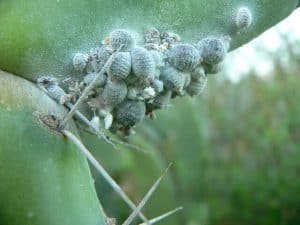 Although passiflora caerulea is very resistant, it also has its enemies, which are mealybugs, aphids and mites.
Although passiflora caerulea is very resistant, it also has its enemies, which are mealybugs, aphids and mites.
All three types of insects can be prevented or treated with Neem Oil or, if the infestation is widespread, with 40% Dimethoate.
But it can also suffer from yellowing of its leaves as a result of excess watering or lack of nutrients.
Once the leaves of passiflora caerulea turn yellow, they will no longer be green, so it is recommended to remove them, to make way for the new ones.
Diseases that attack this plant
Passionflower is prone to plant viruses, especially cucumber mosaic virus, and aphid damage.
When grown in a greenhouse, Passionflower is susceptible to common greenhouse pests such as spider mites, whiteflies, cochineal and cochineal.
Windburn and growing problems are common (as with all garden plants), especially during cold spells or when growing conditions are less than ideal.
Varieties of Passiflora Caerulea
Passiflora caerulea
Blue, white and green flowers in July to October. Resistant. Egg-shaped orange fruits follow the flowers in a good summer. It reaches a height of 10 m.
Passiflora caerulea ‘Constance Elliot’
White and scented flowers. It blooms from July to October. It reaches a height of 10 m. Often needs protection in winter, although it is described as hardy.
Passiflora edulis
Blue and white flowers in July and August. It is only suitable for a cool, but frost-free greenhouse, or a sheltered, south-facing urban garden. It has edible black fruits. It reaches a height of 5 m.
Passiflora antiochensis
Tender, so it is essential to protect it in winter. Soft red flowers with a violet crown. Produces yellow fruits. It reaches a height of 5 m.
Passiflora mollissima
The flowers of this species are very different. Long, tubular pale pink flowers in July and August. It is tender, so it needs protection in winter. It reaches a height of 4 m.
Bibliography and references
- My First Knowledge Encyclopedia. Snake plants and conservation. Published by Grolier Incorporated. New York, 1961. Pages 80-81.

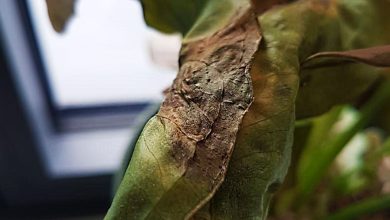
![Photo of Plant Andean Maca: [Pests, Irrigation, Land Preparation and More]](https://www.complete-gardening.com/wp-content/uploads/2022/08/plant-andean-maca-pests-irrigation-land-preparation-and-more-390x220.png)

![Photo of Horse Chestnut: [Crop, Associations, Pests and Diseases]](https://www.complete-gardening.com/wp-content/uploads/2022/08/horse-chestnut-crop-associations-pests-and-diseases-369x220.jpg)